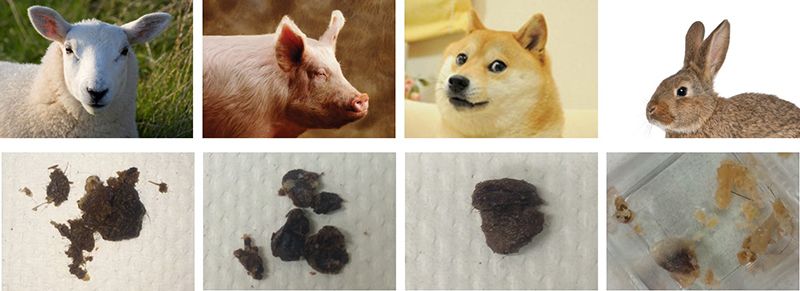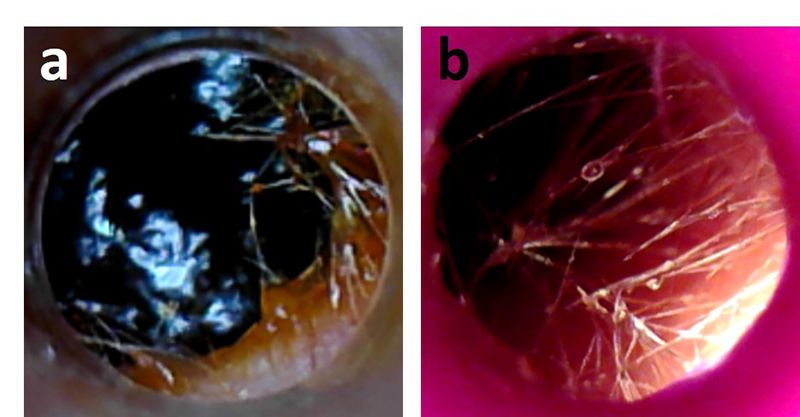Earwax: Coming To a Home Air Filtration System Near You?
A clogged ear on a scuba trip led a Georgia Institute of Technology engineer to study the dust-filtering properties of the waxy substance
/https://tf-cmsv2-smithsonianmag-media.s3.amazonaws.com/filer/f3/44/f3448ffb-f897-44dc-ae01-e749d8dcb76c/earwax.jpg)
It's not every day that a diving vacation paves the way for a possible technological innovation, much less one that involves earwax. Yet, that's precisely what happened for Alexis Noel.
The mechanical engineering PhD candidate at the Georgia Institute of Technology described her scuba diving trip, her boyfriend’s subsequent water-clogged ear, and the culprit—earwax—that kept the water trapped behind his eardrum to her professor, David Hu. In no time, the two were engaged in detailed discussions about the sticky substance.
Then it hit: What more can be learned from earwax?
Intrigued, Noel explains that the waxy material is continuously “stressed and shaped” into various forms due to jaw movements that force the ear canal to teeter between oval and round shapes. These changes ultimately fracture the earwax, eventually causing it to fall out of your ear (albeit in miniscule, hardly visible pieces).
When it comes to earwax’s ability to filter dust particles, she says that it’s filtering dust well before it exits the ear. This process begins when earwax coats ear hairs and creates a web-like structure. This structure, she explains, is “very likely” found inside all mammals’ ears and plays a role in dust collection.
“As air circulates in and out of the ear, dust particles are grabbed by the sticky fluid,” Noel says. The earwax eventually becomes saturated with dust, causing it to then fracture and fall out of the ear.
People typically reserve earwax for cotton swabs. But Noel wondered, could there be a practical use for it outside the ear canal?
“I’m envisioning home air filtration,” Noel says of one possible application, referring to AC units and portable air filters. “An earwax-like filter may last longer than the traditional mesh ones.”
She and her then-undergraduate researcher Zac Zachow began examining the fluid properties of pig, dog, sheep and rabbit earwax. Studying animal earwax, instead of human, meant avoiding the large quantities of paperwork required for the latter, allowing them to get to work that much sooner. Their expectation was that the fluid properties would fluctuate between each animal, but what they discovered was surprising.

“We collected samples from dead animals from another lab in association with Georgia Tech,” Noel says. She explains that their earwax viscosity was “exactly the same whether it was from a tiny rabbit or a large pig. The fluid properties were identical.” Regardless of the contaminant (feces, dirt, dust, etc.), earwax continued to flow within the ear.
Noel found it interesting that a large animal’s earwax has the same properties as a smaller one, but she was not entirely surprised, considering that fluids like mucous or blood typically remain consistent across animals.
Now armed with information about earwax’s fluid properties, Noel is planning to assess the maximum dust-holding capacity of earwax—both human and animal. She’s curious about “how much dust is required to get to that crumbly state.”
Then comes extracting data. “We will be looking at the fracture point for earwax samples with varying concentrations of dust,” she explains. “We will be adding dust to earwax samples, observing whether fracture occurs, and plotting the fracture point versus dust concentration.” Noel adds that this may provide information about the longevity of future filtration systems.

With research ongoing, nailing down potential applications, at this juncture, is somewhat premature, Noel explains. She continues to envision a home air filtration system that incorporates an earwax-like substance optimized for maximum dust-capacity and fracture points. Still, her wheels are spinning. As an avid space fan, she says she’d “love it to be applied to some space” application one day.
Beth Rattner, executive director of the Missoula, Montana-based Biomimicry Institute, was happy to learn of Noel’s research.
“We're always thrilled to hear about scientists' involvement with new research opportunities and how they could inspire creative, more sustainable technologies,” Rattner says. “It's especially fascinating that this involves earwax, something that we all live with every day but rarely think about. Hopefully one day we'll tell our readers on AskNature.org about high-tech air filters inspired by earwax, alongside water filters inspired by whale baleen and aquaporin proteins.”
AskNature.org is a Biomimicry Institute website that allows the community to find, curate and create sustainable design strategies and solutions, all of which are inspired by nature.
Over at Biomimicry 3.8—the Institute’s sister organization—Mark Dorfman has worked as a biomimicry chemist for 10 years. Noel’s earwax research makes him think of jellyfish, of all things.
When jellyfish pump their bodies, he explains, they generate vortices that create a specific flow. This may mean that future dust filtration systems could perhaps involve suspended stinger-like tubes, which work in tandem with earwax-like substances, all in an effort to direct, capture and filter particles appropriately.
Dorfman’s also intrigued with earwax’s crumbling characteristics, which he thinks might carry some potential commercial value.
“Industrial processes are often continuous, rather than batch, so shutting down operations to clean filtration systems is something operations managers try to avoid,” he says. “That’s why the idea of sticky substances that trap airborne particulates has not often been a desirable option to pursue. However, if the sticky substance changes its properties upon saturation with particulates so that it would fall off whatever web-like substrate it was attached to, I think it might be of renewed interest as a viable solution.”
Dorfman’s wheels are spinning too.
“Perhaps there could be a system in which an earwax-like substance was applied in layers, so that as the surface layer becomes saturated and falls off, a fresh, new particulate-capturing layer is exposed,” he says. “I’m still astounded by the fact that nature always reveals surprising new strategies for inspiring solutions to modern industrial challenges.”
For Noel, the search for solutions in nature doesn’t end at earwax. She’s been exploring cat tongues. Noel was even fortunate to observe a tiger’s tongue, a circumstance that arose after the Atlanta Zoo’s tiger, Kavi, died late last year.
Cat tongues are covered in flexible spines that grab hold of tangles in fur and tease them apart. Study of puncture forces comes into play with all of this, Noel says.
“We envision some sort of unique detangling, easy-cleaning brush application to come from this cat tongue work,” Noel says. “I can imagine a human or pet brush easily, but we will also look into alternative applications like carpet cleaning technologies.”
All of this research is certainly interesting, to say the least. Where it goes from here?
Let’s just say we’ll definitely be keeping an ear out for future details.